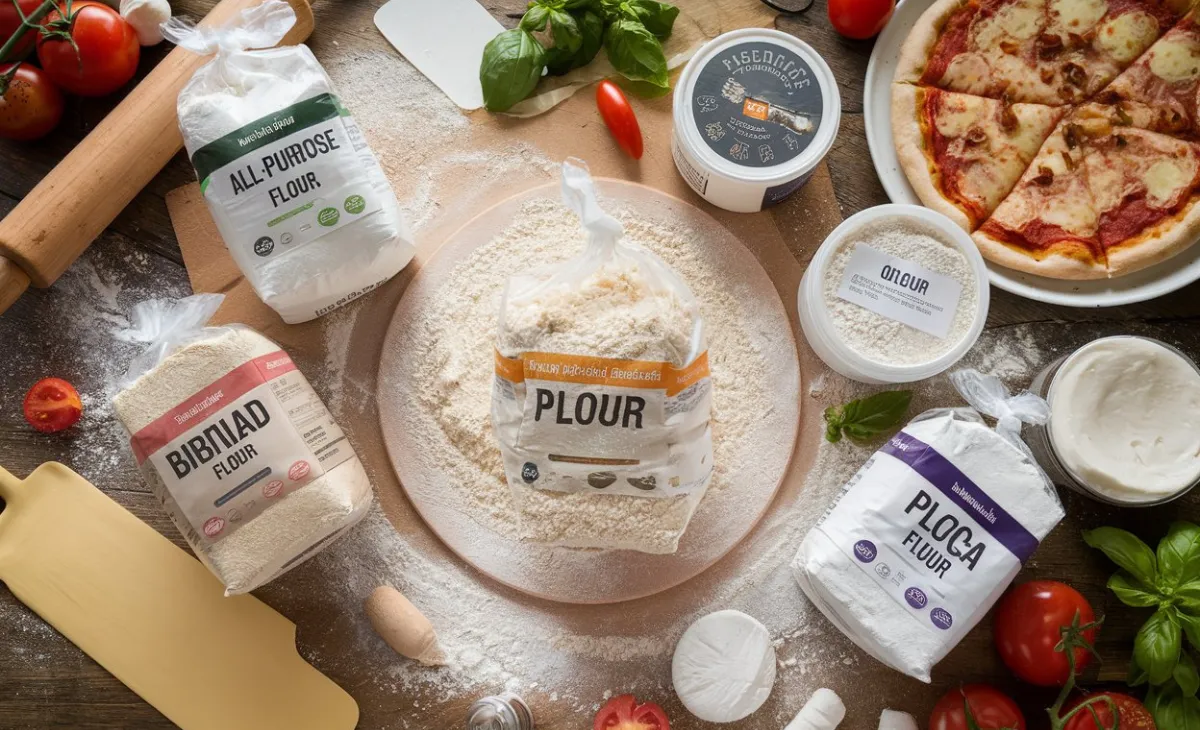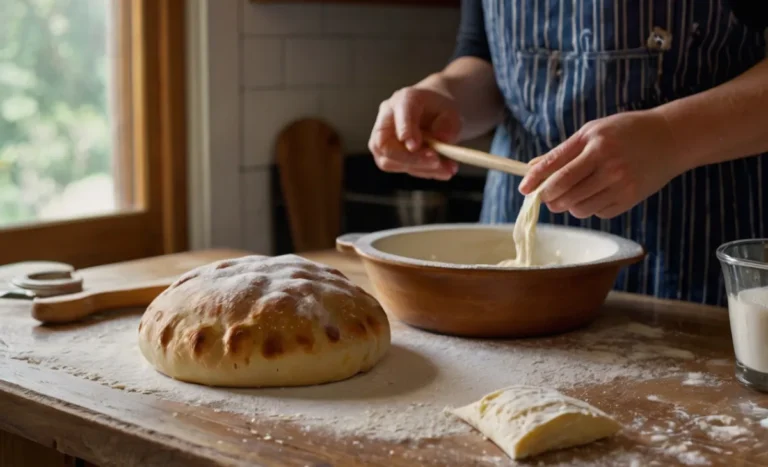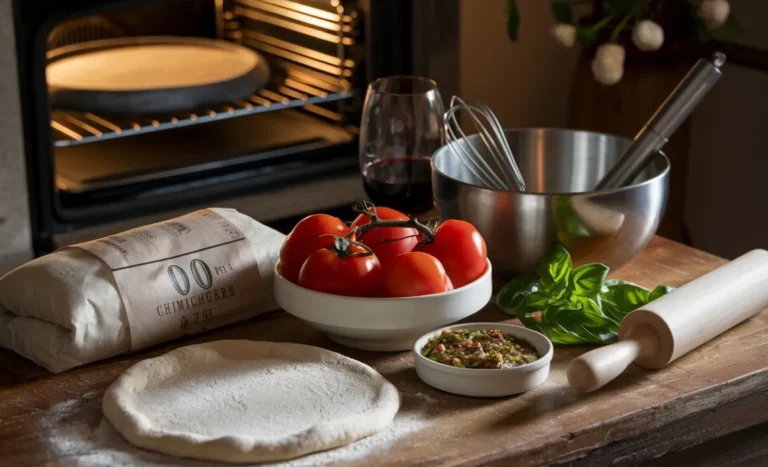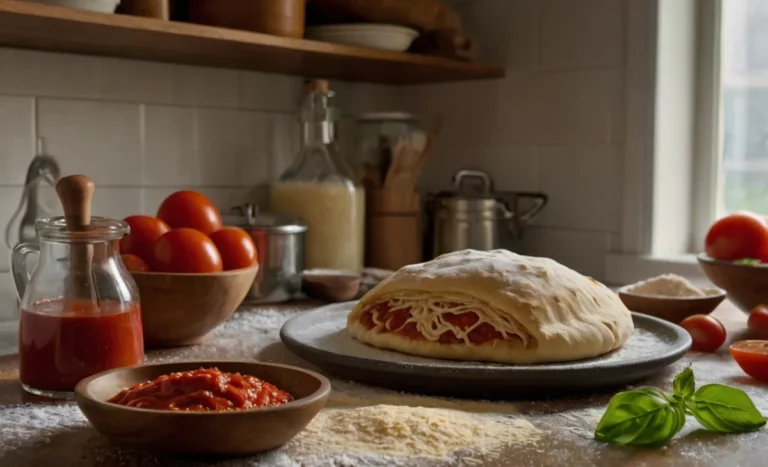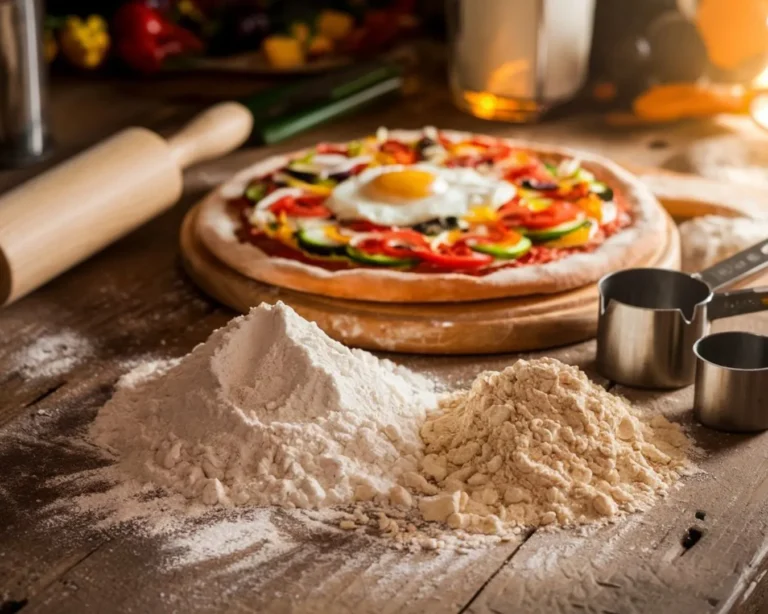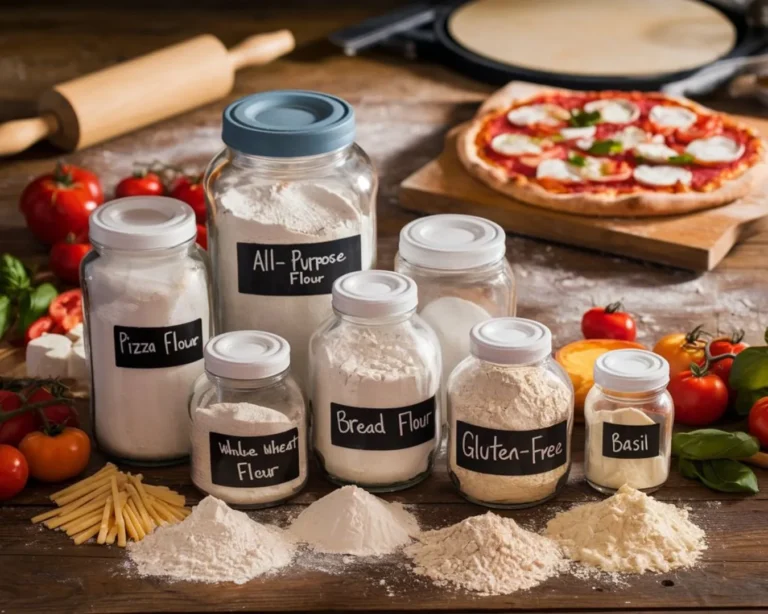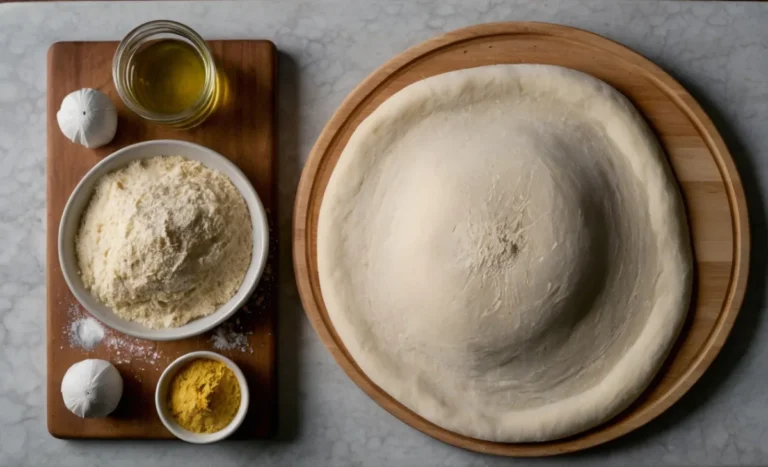The Ultimate Guide to Choosing the Best Pizza Flour for Perfect Crusts
Understanding Pizza Flour: What Makes It Unique?
Pizza flour plays a crucial role in creating the perfect pizza crust. Its unique properties, such as protein content and milling process, set it apart from regular flours. When it comes to pizza-making, choosing the right pizza flour can make all the difference. Understanding its characteristics ensures you achieve the best texture and flavor for your pizza dough.
Pizza flour stands out due to its finely ground texture. Typically, it’s milled from high-protein wheat, which gives it the strength to hold up under the heat of a pizza oven. This fine grind allows the dough to stretch easily, resulting in a light, airy crust. Additionally, the protein content directly impacts the gluten development, providing the chewiness that pizza enthusiasts love.
Another reason pizza flour is unique is its versatility. Different types, such as 00 flour or bread flour, are specifically designed for various pizza styles. 00 flour, for example, is ideal for Neapolitan pizzas due to its low gluten content and ability to form a soft crust. In contrast, bread flour is perfect for a crispier, New York-style pizza, as it holds more moisture and creates a sturdy dough.
Moreover, the milling process of pizza flour helps control how water is absorbed. A good pizza dough requires just the right amount of hydration to ensure the crust rises well without becoming dense. Pizza flour’s high absorption rate allows bakers to manage moisture levels, resulting in a perfectly crispy and golden crust. Understanding these factors will help you choose the ideal flour for your homemade pizzas.
Types of Pizza Flour and Their Impact on Crust Texture
Using the right pizza flour is key to achieving the perfect crust texture. Different types of pizza flour can dramatically change how your pizza turns out—whether it’s chewy, crispy, or soft. In this guide, we’ll explore the main types of pizza flour and provide step-by-step instructions for each. Get ready to discover how choosing the right flour can elevate your pizza game!

1. All-Purpose Flour: For a Balanced Crust
All-purpose flour is great if you’re looking for a versatile option. It creates a medium-thickness crust that balances chewiness and crispiness.
Ingredients:
- 3 cups all-purpose flour
- 1 cup warm water
- 1 tsp salt
- 1 tbsp olive oil
- 1 tsp sugar
- 2 tsp yeast
Instructions:
- In a bowl, mix the warm water, sugar, and yeast. Let it sit for 10 minutes until it’s foamy.
- Add the flour, salt, and olive oil. Mix until the dough forms.
- Knead the dough for 5–7 minutes. Let it rise for 1 hour.
- Roll out the dough, add toppings, and bake at 475°F for 12–15 minutes.
The result? A balanced, chewy crust with a hint of crispiness.
2. Bread Flour: For a Chewy and Crisp Crust
Bread flour contains more protein than all-purpose flour, resulting in a chewier and crispier crust.
Ingredients:
- 3 cups bread flour
- 1 cup warm water
- 1 tsp salt
- 1 tbsp olive oil
- 1 tsp sugar
- 2 tsp yeast
Instructions:
- Combine the yeast, sugar, and warm water. Let it sit for 10 minutes.
- Add the bread flour, salt, and olive oil. Mix and knead for 7 minutes.
- Allow the dough to rise for 1 hour.
- Stretch the dough, top with ingredients, and bake at 500°F for 10–12 minutes.
Bread flour gives a firm, chewy crust with a delightful crunch.
3. 00 Flour: For a Soft and Light Crust
00 flour is ideal for making Neapolitan-style pizza. It creates a soft, pillowy crust with just the right amount of elasticity.
Ingredients:
- 3 cups 00 flour
- 1 cup warm water
- 1 tsp salt
- 1 tbsp olive oil
- 1 tsp sugar
- 2 tsp yeast
Instructions:
- Mix warm water, sugar, and yeast in a bowl. Let it foam for 10 minutes.
- Add the 00 flour, salt, and olive oil. Mix into a smooth dough.
- Knead the dough for 8 minutes and let it rise for 1–2 hours.
- Roll out the dough, add toppings, and bake at 800°F for 90 seconds in a pizza oven.
The result is a soft, melt-in-your-mouth pizza crust with a slightly charred edge.
4. Whole Wheat Flour: For a Healthier, Nutty Crust
Whole wheat flour creates a denser crust with a nutty flavor, perfect for those seeking a healthier alternative.
Ingredients:
- 3 cups whole wheat flour
- 1 cup warm water
- 1 tsp salt
- 1 tbsp olive oil
- 1 tsp sugar
- 2 tsp yeast
Instructions:
- In a bowl, combine warm water, sugar, and yeast. Let sit for 10 minutes.
- Add whole wheat flour, salt, and olive oil. Mix until a dough forms.
- Knead for 10 minutes. Let the dough rise for 1 hour.
- Shape the dough, add toppings, and bake at 450°F for 12–15 minutes.
Whole wheat flour delivers a wholesome, earthy crust with a firm texture.
Each type of pizza flour gives you the power to create different crust styles. By understanding their impact on texture, you can craft the pizza of your dreams!
How Protein Content Affects Pizza Dough
The protein content in pizza flour is a crucial factor in determining the texture and structure of your pizza dough. Higher protein flours result in stronger gluten formation, which affects the chewiness and elasticity of the crust. Choosing the right pizza flour based on its protein content ensures you achieve the ideal crust for your pizza.
Flours with higher protein content, such as bread flour, create a chewier and more structured dough. When mixed with water, the protein forms gluten, which gives the dough its elasticity. This allows the dough to stretch easily without tearing, making it perfect for thin-crust pizzas that require strength and flexibility.
On the other hand, flours with lower protein content, such as 00 flour, produce a softer and more tender crust. These flours form less gluten, which results in a more delicate dough that’s perfect for Neapolitan-style pizzas. The lower gluten level helps create a light, airy crust that melts in your mouth without being overly chewy.
Balancing protein content in your pizza flour is key to achieving the desired texture. If you want a crispier crust, flours with moderate protein levels, like all-purpose flour, are ideal. They provide enough gluten development for structure while allowing for a slight crispness. By understanding the impact of protein content, you can tailor your pizza dough to your preferences and create the perfect pizza crust.
Comparing All-Purpose, Bread, and 00 Flour for Pizza
Choosing the right pizza flour is essential to achieving the perfect crust. Each type of flour—whether all-purpose, bread, or 00—has unique qualities that affect the dough’s texture and taste. By comparing these flours, you’ll understand how to select the best one for your homemade pizza.
All-purpose flour is the most versatile option for pizza dough. It has a moderate protein content, typically around 10-12%, which creates a balanced crust. The result is a dough that’s easy to work with and produces a crust that’s slightly chewy with a hint of crispiness. This makes it ideal for those who enjoy a more traditional, medium-thickness pizza crust.
Bread flour, on the other hand, has a higher protein content, usually around 12-14%. This makes the dough stronger and chewier, perfect for those who prefer a more substantial crust. The extra gluten formed with bread flour results in a dough that can handle heavier toppings while maintaining its structure. If you enjoy New York-style pizzas, bread flour is a great choice for its crispy and chewy finish.
00 flour, often used for authentic Neapolitan pizza, is finely ground and has a lower protein content than bread flour, around 8-10%. It creates a soft, tender crust with a slight chew. The dough made from 00 flour stretches easily and cooks quickly, especially in high-heat pizza ovens. This flour is perfect for those looking to recreate the airy, light crust found in traditional Italian pizzas. Understanding these differences helps you choose the right flour for your desired pizza style.
Choosing the Right Pizza Flour for Different Pizza Styles
Selecting the perfect pizza flour can dramatically enhance the style and texture of your pizza. Different pizza styles require specific flour types to achieve the right balance of chewiness, crispness, and flavor. Understanding how pizza flour impacts the dough will help you make the right choice for each type of pizza you create.
For Neapolitan-style pizza, 00 flour is the top choice. This finely ground flour, with a lower protein content, produces a soft, tender crust that is slightly chewy. It’s perfect for high-temperature cooking in wood-fired ovens, as it allows the dough to puff up quickly while remaining light and airy. If you’re aiming for a traditional Italian pizza, 00 flour will give you that authentic, melt-in-your-mouth experience.
If you prefer a New York-style pizza, bread flour is the best option. With its higher protein content, bread flour creates a chewier, more structured crust that can support heavy toppings. This flour is ideal for a thin, crisp base with a slightly thicker edge. Bread flour helps the dough develop strong gluten bonds, giving the pizza its signature chewy texture and golden-brown crunch.
For a more versatile approach, all-purpose flour works well for a variety of pizza styles. It offers a balanced crust that is both chewy and slightly crispy. All-purpose flour is a great middle ground for those who enjoy experimenting with different pizza recipes without committing to a specific style. Whether you’re making a pan pizza or a classic Margherita, all-purpose flour delivers reliable results.
Tips for Storing and Handling Pizza Flour Properly
Properly storing and handling pizza flour is essential to maintaining its freshness and quality. Whether you’re an occasional pizza maker or a frequent dough enthusiast, taking care of your pizza flour ensures consistent results every time. By following a few simple storage tips, you can keep your pizza flour in top condition and ready to use.
First, always store pizza flour in an airtight container. Exposure to air can cause the flour to absorb moisture, leading to clumping and a shorter shelf life. Additionally, it can attract unwanted pests. Storing your flour in a cool, dry place will preserve its texture and prevent it from going stale. A pantry or kitchen cabinet works well, as long as it is away from direct sunlight.
Another important tip is to refrigerate or freeze your pizza flour for long-term storage. If you buy in bulk or don’t use it often, placing it in the refrigerator or freezer can extend its freshness. In colder storage, pizza flour can last up to a year without losing its quality. Just remember to bring it to room temperature before using it in your dough to avoid issues with the dough’s hydration.
Finally, handling pizza flour with care is crucial. Always sift the flour before using it to ensure it’s lump-free and easy to work with. This step not only helps remove any impurities but also aerates the flour, making your dough lighter and fluffier. Proper storage and handling will help you get the best performance from your pizza flour, resulting in a perfectly textured crust every time.
Common Mistakes to Avoid When Using Pizza Flour
Using pizza flour correctly is key to achieving the perfect pizza crust, but it’s easy to make mistakes that can affect the dough’s texture and taste. Knowing how to avoid these common errors will help you make the most of your pizza flour and improve your overall pizza-making experience. By understanding these pitfalls, you’ll be on your way to consistently creating delicious, high-quality pizza crusts.
One common mistake is using the wrong type of pizza flour for your desired crust. Different types of flour have varying protein levels, which affect the dough’s texture. Using all-purpose flour when you need bread flour, for example, can result in a crust that’s too soft or lacking structure. Always match your flour type to the style of pizza you want to create, whether it’s chewy, crispy, or light.
Another frequent error is not measuring your pizza flour correctly. Too much flour can make the dough stiff and difficult to knead, while too little flour can cause the dough to be sticky and hard to shape. Always use a kitchen scale or spoon-and-level method to ensure accurate measurements. This will help you maintain the proper dough consistency and make the kneading process smoother.
Finally, skipping the resting or rising time is a mistake that can ruin your dough. Pizza flour needs time to hydrate fully and develop gluten, which gives the dough its elasticity. Rushing this process can result in a tough, dense crust. Allow the dough to rise for the recommended time to ensure a light, airy crust with a perfect balance of chewiness and crispiness.
Easy Keto Cottage Cheese Dip Recipes: Low-Carb and Packed with Flavor

